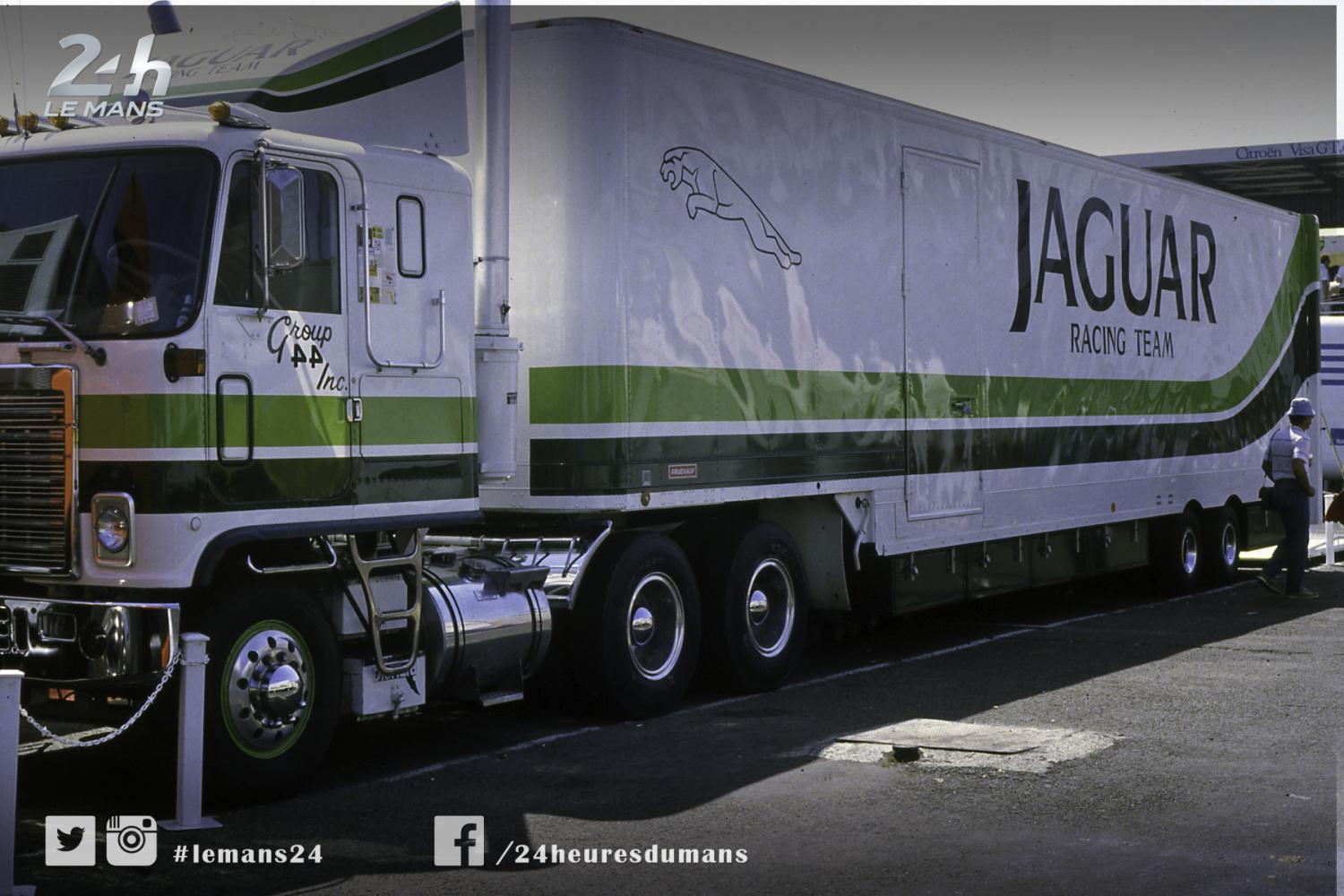Two new functions served to enhance the efficiency of the trucks-turned-mobile command centers for the teams, marques and factories.
After everyone switched to tractor-trailers, they then had the necessary space at their disposal to set up their mobile headquarters. Storage areas to complement the workshops were created, as well as an administrative staff workstation and a meeting room at the front of the the trailer while the cars were benched during the time it took to travel. Sometimes the height of the trailer allowed two cars to be superimposed, like Jaguar in the mid-1980s for example, which gave former Intermarché tractor-trailers a second wind.
The return of the Americans at Le Mans 30 years after Briggs Cunningham signaled the reappearance of legendary trucks thanks to the Whittington brothers and Dick Barbour. The Peterbilts and other Kenworths were a favorite among amateur photographers with their Alcoa alloy wheels, polished tanks and gleaming bumpers. Fans of "conventional" or "cabover" cabins - advanced or long hoods - dreamt of the famous Route 66. This was back when it was trendy to paint the silhouettes of the cars in transit on the flanks of the trailers, colorful like Newman, patriotic like Jaguar and understated chic like the Kouros.
Click below for previous installments in this series:
24 Hours of Le Mans carrier trucks (1) - The vanguard
24 Hours of Le Mans carrier trucks (2) - The golden age of the 1960s

